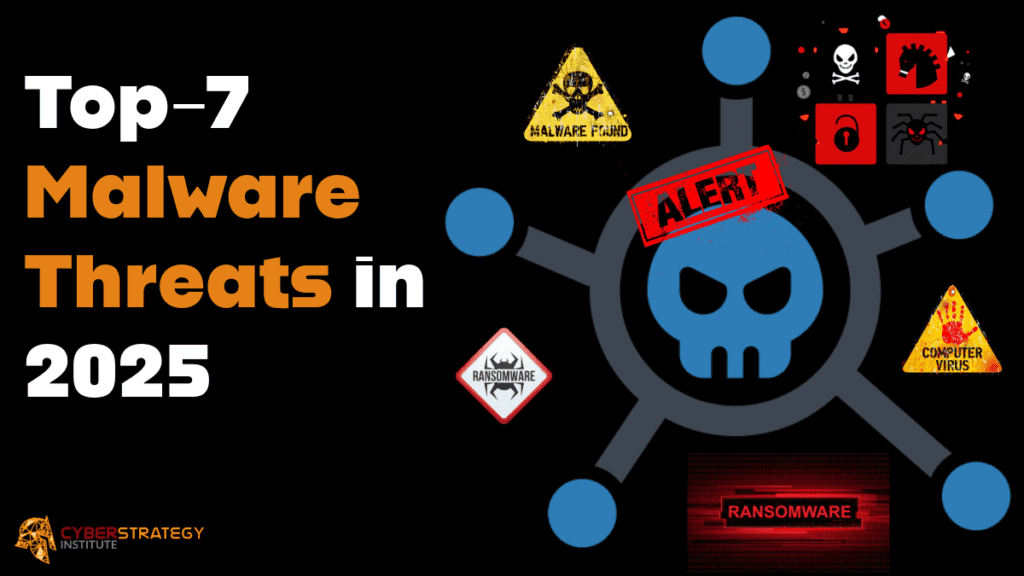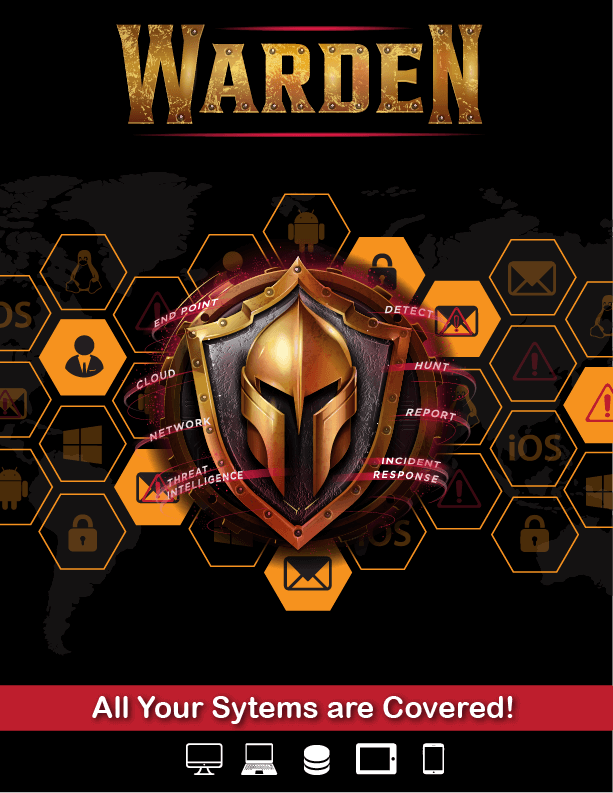Top-7 Malware Threats in 2025: What You Need to Know
Introduction: Cybersecurity Threats – Malware Predictions for 2025
As we navigate through 2025, the cybersecurity landscape continues to evolve, presenting new challenges for individuals and organizations alike. Understanding the most prevalent malware threats is crucial for implementing effective defenses. Below, we break down the top malware threats in 2025 and how you can protect against them.

1. Lumma Stealer
Lumma is a sophisticated information-stealing malware that has been active since 2022. It targets sensitive data such as login credentials, financial information, and personal details by infiltrating applications and exfiltrating data. In 2024, Lumma was distributed through fake CAPTCHA pages, torrents, and phishing emails.
2. XWorm
XWorm is a remote access trojan (RAT) that grants cybercriminals full control over infected systems. It can steal financial data, browsing history, saved passwords, and cryptocurrency wallet details. Attackers use XWorm for keystroke logging, webcam spying, audio recording, and scanning network connections. In 2024, XWorm was seen exploiting CloudFlare tunnels and legitimate digital certificates.
3. AsyncRAT
AsyncRAT has been a major threat since 2019 and continues to evolve. It has screen recording, keylogging, and file theft capabilities while also disabling security software. In 2024, AsyncRAT was commonly distributed via pirated software and AI-generated phishing campaigns.
4. Remcos
Remcos is a malware disguised as a legitimate remote access tool. Since 2019, it has been used in numerous attacks to steal information, remotely control systems, record keystrokes, and disable security defenses. In 2024, attackers used script-based attacks and exploited CVE-2017-11882 vulnerabilities to distribute Remcos.
5. LockBit Ransomware
LockBit is one of the most dominant ransomware threats, responsible for a significant portion of Ransomware-as-a-Service (RaaS) attacks. In 2024, it targeted major organizations, including the UK’s Royal Mail and India’s National Aerospace Laboratories. Despite law enforcement crackdowns, the LockBit gang remains active with plans to release LockBit 4.0 in 2025.
6. TrickMo
The Banco de España recently issued a warning about the arrival of TrickMo in Spain. This banking trojan steals personal and banking data by accessing SMS and capturing credentials. It disguises itself as a legitimate mobile interface, allowing it to record keystrokes and steal banking details. Originally linked to TrickBot in Germany (2019), TrickMo continues to evolve.
7. RedLine Stealer
RedLine Stealer has been one of the most active malware families in recent years. It steals credentials, financial information, and system data while also injecting additional payloads into infected machines. RedLine is often distributed through fake software downloads, phishing campaigns, and compromised websites. In 2025, new variants have been reported, featuring enhanced evasion techniques to bypass antivirus detection.
The Challenge of Detection
Traditional detection-based security measures often fail to keep up with the rapid evolution of malware. Cybercriminals develop new techniques to bypass traditional defenses, leaving organizations vulnerable. The cat-and-mouse game of malware vs. security solutions makes it critical to shift toward a proactive security strategy.

Warden Endpoint Defense: Securing Devices Against Malware
While Warden CNAPP focuses on cloud security, Warden Endpoint Defense is designed to protect individual devices against evolving malware, ransomware, phishing, viruses, and other emerging threats. It does this by protecting you against the biggest threat to your systems, which is the human aspect of being tricked by social engineering. Cyber criminals are using all sorts of attack vectors, such as fileless malware, new threats and types of malware, supply chain attacks and even using AI-driven threats to get passed defenses to turn you into an insider threat.
Key Features of Warden Endpoint Defense:
-
Default Deny Technology: Blocks unknown and untrusted executables before they can run.
-
Kernel API Virtualization: Prevents malware from exploiting system-level vulnerabilities.
-
Behavioral Containment: Identifies and halts malicious activities in real time.
-
Zero Trust Endpoint Security: Ensures only verified applications can execute, eliminating risks from fileless attacks and unknown threats.
By integrating Warden Endpoint Defense, organizations can fortify their security posture against ransomware, trojans, and advanced persistent threats (APTs).
How Warden CNAPP Provides Proactive Protection to stop Cloud Cyber Threats like Ransomware, Virus and Malware Attacks
Warden’s Cloud-Native Application Protection Platform (CNAPP) offers a proactive approach by integrating multiple security capabilities into a unified platform to help stop cyber attacks.
Key Features of Warden CNAPP:
-
Cloud Security Posture Management (CSPM): Identifies and remediates misconfigurations and compliance violations.
-
Cloud Workload Protection (CWPP): Scans workloads, identifies vulnerabilities, and provides real-time runtime protection.
-
Runtime Threat Protection: Prevents malware and other top cybersecurity threats before they can execute damage.
Conclusion: Top 7 Cybersecurity Threats and Predictions for 2025
As malware threats become more sophisticated in 2025, relying solely on detection-based security is no longer sufficient. Cybercriminals are leveraging AI, exploiting vulnerabilities, and constantly evolving tactics to evade traditional defenses.
The best defense is a proactive approach against the top-7 malware threats in 2025. Implementing solutions like Warden CNAPP ensures that threats are neutralized before they cause harm. By securing applications from development to deployment and runtime, organizations can stay ahead of emerging cyber threats and maintain a strong security posture in an increasingly dangerous digital landscape.


 The Truth About EDR Bypass: Why Your EDRs / Endpoint Security Tools Are Failing
The Truth About EDR Bypass: Why Your EDRs / Endpoint Security Tools Are Failing


